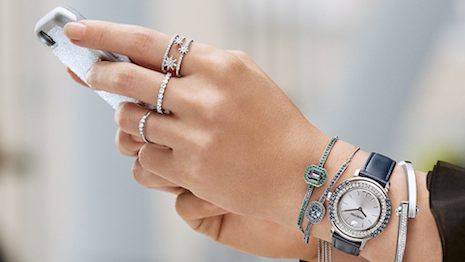- About
- Subscribe Now
- New York,
March 21, 2017

Young Chinese consumers are adopting mobile payments at a high rate, possibly signaling the need for luxury brands to strengthen their mobile payment platforms if they want to take advantage of this valuable demographic.
According to a report from Labbrand, roughly 86 percent of Chinese millennials are using mobile payments for offline purchasing. With an eclectic taste and mobile-savvy shopping habits, these young people represent a significant customer base that luxury brands can tap into if they are willing to invest in mobile payments.
“For young Chinese shoppers, a good in-store experience, which luxury brands usually put more efforts into, means frictionless experience,” said Denise Sabet, managing director of Labbrand North America, New York. “In other words, they expect a similar level of convenience that they can get from Amazon or Uber.
“At the same time, the so called ‘Chinese millennials’ aren’t all the same. Luxury brands still need insights to identify a core target and cater brand and marketing strategy to them,” she said.
Mobile payment landscape
Since the inception of mobile payments, the technology has most often been used for online shopping rather than in-store payments.
But while in-store mobile payments have been slowly increasing in popularity in the past few years in the U.S., consumers in other nations have adopted the solution with much more enthusiasm.
One area where this is clear is in the shopping habits of Chinese millennials shoppers, who have embraced in-store mobile payments at an overwhelming rate.
Labbrand's findings were presented at an event in New York
New research from Labbrand confirmed that 86 percent of Chinese millennials use in-store mobile payments, as opposed to just 45 percent of United States consumers in the same age group.
This bit of data is of particular interest to luxury retailers considering the rise in nouveau riche young Chinese consumers, such as the ones notably profiled in the New Yorker last year.
These young people are newly wealthy and eager to spend their money on Western brands.
For luxury brands, it is important to be able to engage these consumers through the channels they are most likely to be using. And in this case, that channel is mobile payments.
The social experience
The research conducted by Labbrand also compared social media habits of Chinese millennials compared to U.S. millennials.
Overall, Chinese millennials are far more social than their U.S. counterparts, regularly sharing information about what they are doing and where they are going, as well as frequently reviewing restaurants, stores and other activities.
Seventy-seven percent of Chinese millennials regularly reviewed stores and activities on social media compared to 45 percent for Americans.
This represents yet another opportunity for luxury brands to take advantage, making the retail experience highly sharable and favorable for consumers so they can encourage them to share and review their store positively and potentially attract even more customers.
Labbrand's findings on millennial shopping habits
In the U.S., mobile payments are often driven by merchants, such as the payment option provided through the Starbucks mobile application, rather than dedicated mobile payment platforms such as Apple Pay (see story).
That is not necessarily the case in other countries, however. China has its own mobile payments platforms that are most prevalent there, and it is important for luxury brands elsewhere to be fluent in them.
“Luxury brands should certainly have China’s online payment terminals such as Alipay and WeChat Wallet in bricks and mortar stores in China, as well as locations outside of China that are popular with Chinese tourists,” Labbrand's Ms. Sabet said. “If they do have a branded WeChat site or branded ecommerce platform obviously mobile payments should be usable there.
“Besides that, it also opens up an opportunity for luxury brands to re-imagine the retail environment," she said. "Is the traditional cashier register still necessary? Can customers select a product inside the store, add it to his or her digital shopping cart and complete the transaction online? Can unique digital experiences like virtual reality or augmented reality be implemented to further connect the retail space and online experience?”
But most of all, luxury retailers should understand that for many young Chinese consumers, shopping is about the experience as much as it is about the product. Making the shopping experience comfortable and memorable in addition to mobile is key to success.
“Technology and human service are not mutually exclusive,” Ms. Sabet said. “The integration of human services with various digital touchpoints should be based on the proposition of the brand itself and the understanding on its target market.”
Share your thoughts. Click here